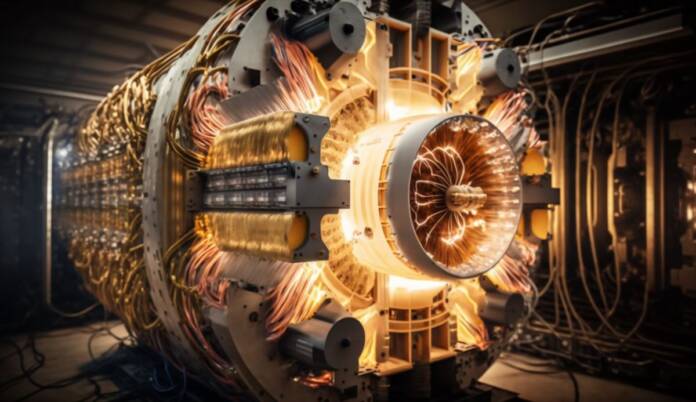Nuclear physics, once a highly secure and classified scientific field, is embracing openness and open source software in a significant way.
The recent breakthrough in nuclear fusion, which generated more energy than it took to start the reaction, is a clear example of how open source software has paved the way for this achievement.
The role of open source in advancing nuclear physics
Development of tools and international collaboration
In the past, many of the tools and software used in nuclear physics research were proprietary, making it difficult for researchers to access and collaborate. However, in the last decade, a growing number of scientific organizations have adopted and released open source tools that have allowed researchers from around the world to collaborate and build on each other’s work.
Supercomputers and simulations
Nuclear fusion and fission research is expensive and time consuming. To address this problem, researchers use computer simulations on high-performance systems (HPCs) to test ideas before experimenting with real equipment. The use of open source software in this field has enabled the development of tools that make it easier to create and run these complex simulations, accelerating research in areas such as nuclear fusion and other scientific fields.
The importance of artificial intelligence in nuclear research
AI integration and simulations
Artificial intelligence (AI) is playing an increasingly important role in the field of nuclear physics, especially in running and analyzing simulations. Researchers use AI to process and analyze large data sets generated by experiments and simulations, allowing more accurate predictions about the results of future experiments and optimizing research approaches.
AI-powered advances in nuclear fusion
A recent example of how AI has contributed to the advancement of nuclear physics is the breakthrough in controlled nuclear fusion achieved at the National Ignition Facility (NIF) in 2022. The CogSim platform, which combines AI and simulations, was used to predict the probability of success of the experiment, allowing researchers to focus on promising approaches and improve their results. In the future, AI is expected to play an even bigger role in nuclear research, such as designing and tuning experiments in real time.
Benefits and applications beyond nuclear physics
The use of open source technologies and approaches in nuclear physics has not only boosted research in this field, but has also enabled the development of tools and applications in other scientific and technological areas. Tools like MFEM and MOOSE, originally developed for nuclear research, have found applications in structural engineering, materials modeling, and climate science, among others. By sharing the knowledge and tools developed in the field of nuclear physics, other fields of research benefit and progress in a variety of areas is accelerated.
Challenges and future prospects
Ethical and safety issues
Despite the benefits associated with adopting open source in nuclear physics, there are also security and ethical challenges. The disclosure of sensitive information could increase the risks of nuclear proliferation and fall into the hands of malicious actors. Therefore, it is essential to maintain a balance between transparency and the protection of critical information.
The role of the scientific community and public policies
The future of nuclear physics and open source largely depends on the collaboration and commitment of the scientific community and public policy makers. Promoting education and training in areas such as nuclear physics, programming and artificial intelligence will be crucial to ensure there are enough trained experts to drive future research. It must be taken into account that public policies should encourage international collaboration and the development of open source initiatives in science and technology.
The adoption of open source in nuclear physics has proven to be a catalyst for progress in this discipline, with significant advances in areas such as controlled nuclear fusion and artificial intelligence applied to nuclear research. As the field evolves, it is imperative that the scientific community and public policy makers collaborate to address ethical and security challenges and ensure that the balance between transparency and information protection is maintained.
The future of nuclear physics and its impact on other research areas largely depends on the ability of the scientific community to adapt and adopt open source approaches. In doing so, we can look forward to an era of unprecedented discoveries and innovations in nuclear physics and beyond, benefiting society as a whole and opening new frontiers in understanding the universe around us.












